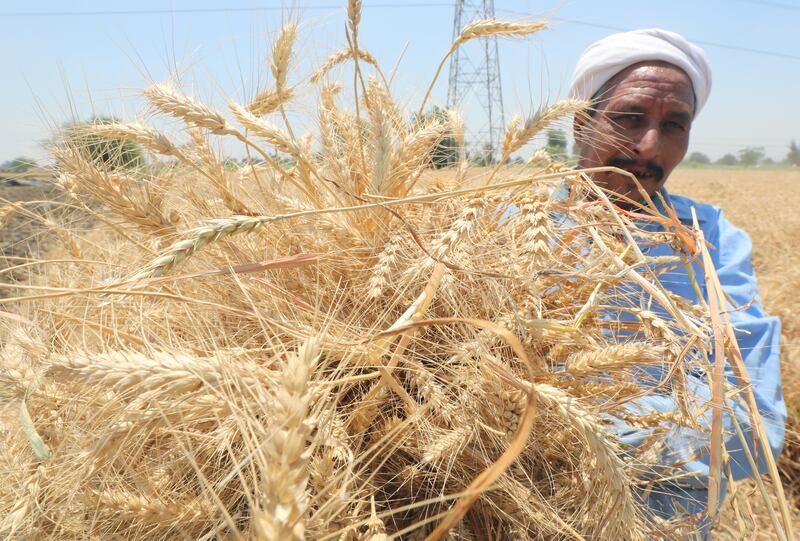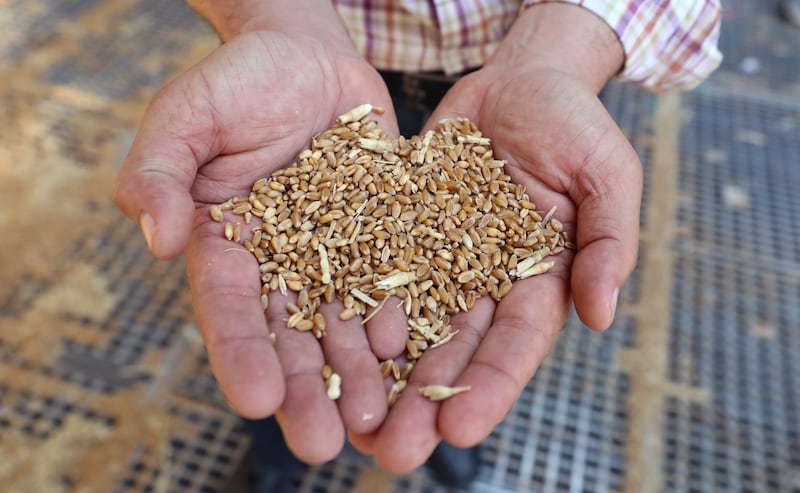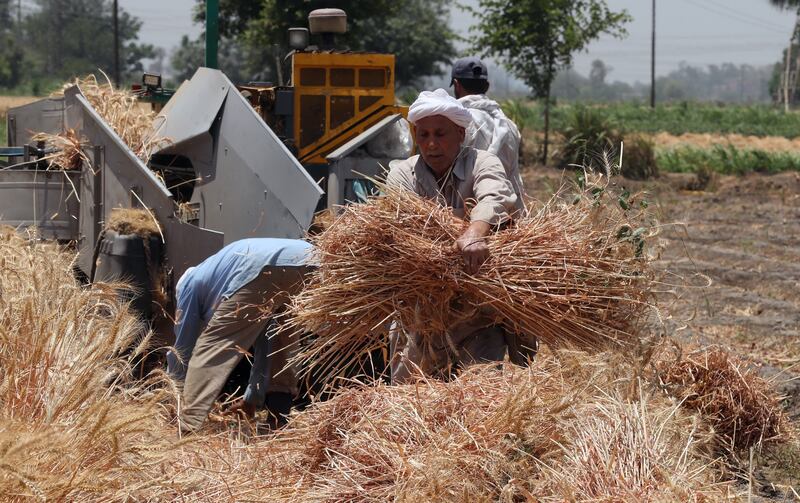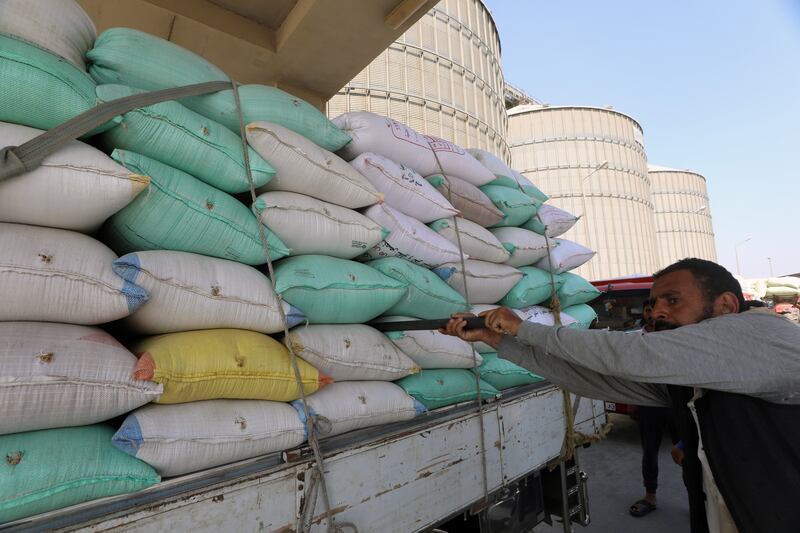S&P Global Ratings has revised Egypt’s outlook to negative on prospects of further currency depreciation, a continued rise in inflation and the possibility of the country’s external financing needs outgrowing its funding sources.
The rating agency affirmed its long and short-term foreign and local currency sovereign credit ratings of Egypt at “B/B”, seven notches above default level and at par with countries such as Uganda.
The Arab world’s third-largest economy's negative outlook underpins risks that the policy measures implemented by authorities may be “insufficient to stabilise the exchange rate” and attract foreign currency inflows, essential for meeting its external financing needs.
“The outlook revision reflects our view that Egypt's funding sources may not cover its high external financing requirements of about $17 billion in the fiscal year ending June 30, 2023, and $20 billion in fiscal year 2024,” S&P analysts led by Trevor Cullinan said in a statement.
“Delays to currency and structural reforms put pressure on the Egyptian pound, increasing the risk for the government and the broader economy of further sharp currency devaluations, higher inflation and rising interest rates.”
Egypt, the most populous Arab country and one of the biggest wheat importers globally, has faced stiff economic headwinds since Russia invaded Ukraine in February 2022.
In March, Egypt’s annual urban inflation rose to 32.7 per cent, its highest level in six years, largely driven by soaring food prices, according to government data.
The latest annual inflation is narrowly below the all-time high of 32.95 per cent in July 2017, less than a year after Egypt devalued its currency by half as part of a $12 billion support package offered by the International Monetary Fund.
The Egyptian currency is also under severe pressure and has been devalued three times since March last year.
The Egyptian pound has lost about 50 per cent of its value against the US dollar and is among the worst-performing currencies globally this year.
“Notwithstanding the longer-term benefit of a more flexible exchange rate on the economy, its decline is currently adding to already-high inflation,” S&P analysts said.
The weaker currency is increasing import costs, and inflation in Egypt is expected to average 23 per cent in the 2023 fiscal year, moderating to 18 per cent in the 2024 fiscal year, they added.
A persistent shortage of foreign currency and subsequent delays in imports are also adding to the strain on the country’s economy.
Authorities are now trying to secure foreign currency by selling stakes in state-owned enterprises. Egypt has announced plans to offer stakes in 32 state companies, including banks, to investors.
However, similar efforts in the past have not seen a great deal of success, S&P said.
It expects the country's external funding needs to be largely met by multilateral and bilateral lenders, but “risks to the disbursement of funds have increased”.
In March, the World Bank approved a new Country Partnership Framework for Egypt to provide $7 billion in funds over the 2023 to 2027 fiscal years.
The agreement will be enforced jointly by the World Bank, the International Finance Corporation and the Multilateral Investment Guarantee Agency.
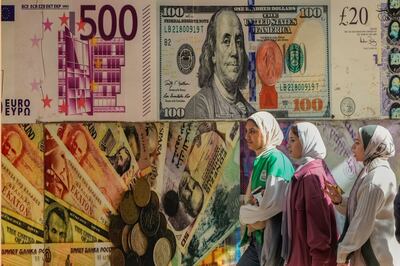
The International Bank for Reconstruction and Development will extend $1 billion a year for the entire period while about $2 billion will come from the IFC, in addition to guarantees from Miga, the World Bank said at the time.
Last year, the IMF also agreed to extend a $3 billion funding that is contingent on the country introducing a flexible foreign exchange policy and reducing the state's footprint in the economy to allow more room for the private sector.
S&P said it could further lower Egypt’s ratings over the next 12 months if “multilateral and bilateral funding support is more limited than expected”.
“We could also take a negative rating action if Egypt's external profile comes under greater strain than we expect and inflationary pressures persist such that risk of domestic unrest increases, among other potential repercussions,” S&P analysts said.
The rating agency expects Egypt's economic growth to average 4 per cent over next three years.
The government's headline deficit is estimated to increase to 7 per cent of gross domestic product in the current fiscal year, alongside a “more pronounced weakening of the primary fiscal surplus due to rising government interest costs”.
The large informal sector, relatively weak governance and barriers to competition that restrict private-sector activity are among factors inhibiting economic growth, S&P said.
It expects a decline in the net government debt-to-GDP ratio through to fiscal 2026, after increasing to about 82 per cent of GDP in fiscal 2023.
However, Egypt's debt burden and debt-servicing needs will remain very high and sensitive to movements in the exchange rate.
“Absent sufficient foreign currency funding, Egyptian transactions with the rest of the world would slow significantly, with negative implications for GDP growth, and this could translate into less incentives to service external debt,” S&P analysts said.
The tourism sector, a key foreign exchange earner for Egypt, should fully recover in 2023. It contributed about 12 per cent of GDP, 10 per cent of total employment, and 16 per cent of current account receipts in 2019, before Covid-19.
S&P said it could revise the outlook to stable on a higher possibility of Egypt's foreign currency funding needs being met through policy initiatives including inflows through the sales of government entities, a key tenet of the IMF programme.


